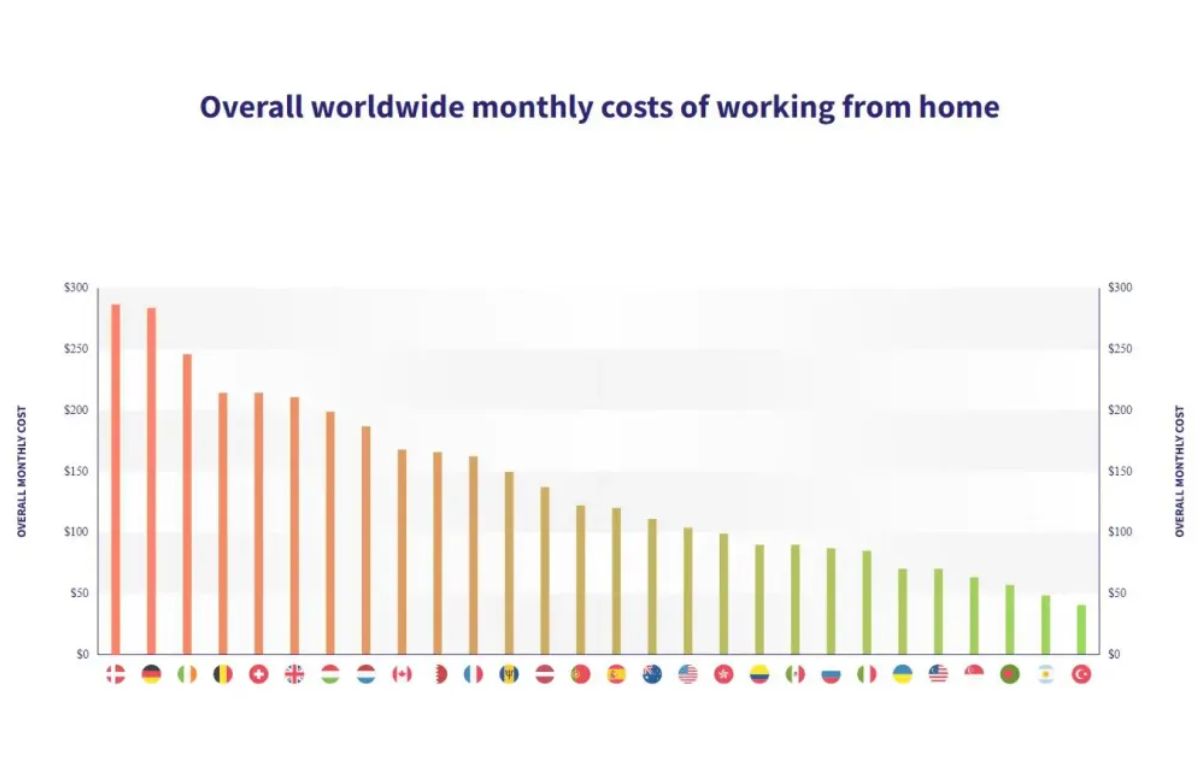Before the pandemic, working remotely was a limited option that only a few companies offered their employees. But after Covid struck, many businesses had their employees work from home indefinitely. Almost two years of remotely working from home have made many people reluctant to go back to the office, considering how time-consuming and costly commutes are. However, there are some hidden costs of remote work that not everyone has considered, and after going over these costs, you might reconsider how often your work from home.
-
Work-Life Balance
Humans have a psychological need to have time for work and time for play. If a person does not set aside time for themselves after their work for the day, stress and anxiety levels begin to increase significantly. Working in an office helps provide a distinct boundary that allows employees to separate their work environment from their personal life.
When working remotely, it can be hard to establish a clear line between me-time and work-time. This can affect your mental well-being and thus decrease your productivity since you will feel drained. When working from home, you need to exert extra effort to maintain a healthy work-life balance.
-
Extra Utilities
One of the main costs that employees incur when working from home is a significant increase in utility bills. As an employee, not only are you using more electricity since you will have to work on your device and have the lights on, but you will also notice an increase in the water bill. Since you are home, your bathroom breaks and general water usage will definitely affect how high your water bill gets.
If you decide to compare utility bills before remote work and after, you might notice a spike you may have overlooked before. Generally speaking, based on data presented by Compare the Market, various sources of energy will cost you differently depending on where you live and what kind of plan you’re on. Working remotely means having to constantly reassess your energy plan and consider alternatives to ensure that you’re not going over budget to cover utilities.

-
Workspace Set-Up
In an office, the employer is the one providing all sorts of material to ensure that an employee has a sufficient workspace to do assigned tasks. However, most businesses may ask employees to use their own personal computers and laptops to conduct work from their homes. If a person does not have up-to-date technology or is required to constantly join meetings from home, they might need to buy new devices or add-ons such as a webcam and an office chair. The costs of these items can quickly climb (depending on quality), and companies don’t often reimburse their employees for these purchases. The cost of office supplies also adds up over time; ink cartridges, paper, staples, and other seemingly cheap supplies can add up to significant expenses that employees end up shouldering completely.
-
Self-Management Issues
If an employee knows how to manage their time responsibly and delivers tasks without management having to follow up repeatedly, working from home may not pose an issue. However, if an employee does not do well when it comes to managing themselves, this may cause issues since managers will not be able to constantly be in touch with their employees like in an office setting. As an employee, if you need someone to keep you on track, you’ll definitely feel at a disadvantage when working from home.
-
Connectivity Issues
As mentioned above, management cannot be in as much contact with their teams when working remotely. This is because in an office, you get face-to-face interaction and everyone’s devices are connected to an office network. Working from home means having to get a personal internet connection which may affect your connectivity with the rest of the office. If you live in an area with power outages, you might struggle with the constant loss of connection and work.
-
Decreased Sense of Unity
Since human interaction is at a bare minimum when employees are working from different places, the sense of unity that one has when they work within a bigger entity will slowly diminish. This can create tension between employees working on similar projects since communication through chatting or through online meetings is not the same as face-to-face interaction.
-
Data Security
When thinking of the hidden costs of remote work, loss of data security is one of the most dangerous costs. Companies can lose millions of dollars if data is compromised or information is leaked. In an office setting, it’s harder for data to be stolen since all devices are connected to a secure network. Since the start of working from home, companies have been leaning on third-party programs to send data and communicate. These third-party programs can be the cause of serious data loss or theft if one is not careful.

Now that you’re fully aware of the hidden costs of working from home, you can make a more informed decision regarding whether you want to go back to the office or not. It may take some time to get used to being back in the office, but it will definitely end up saving you both money and mental energy in the long run.
